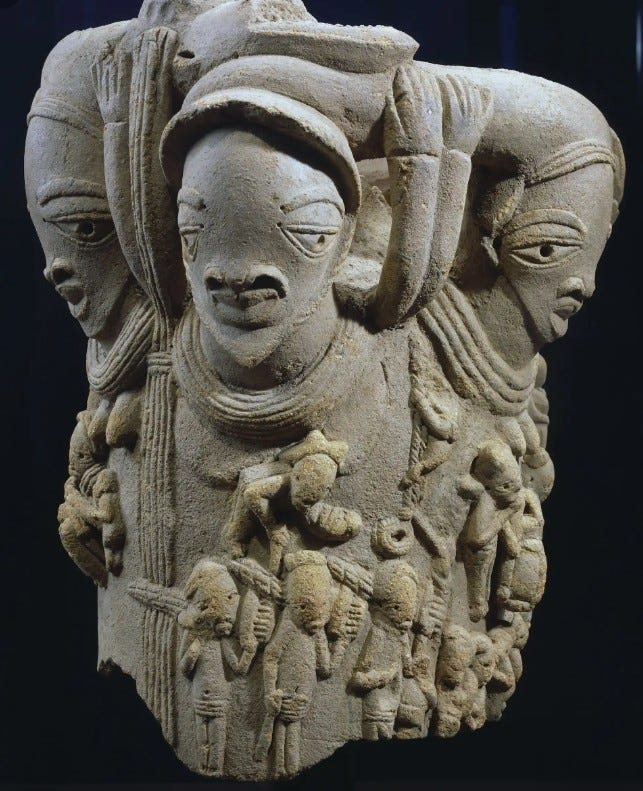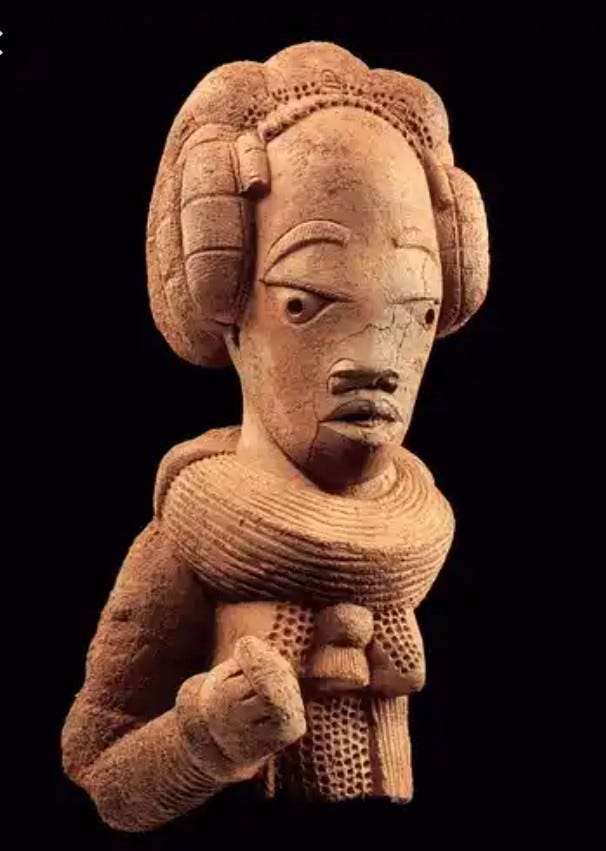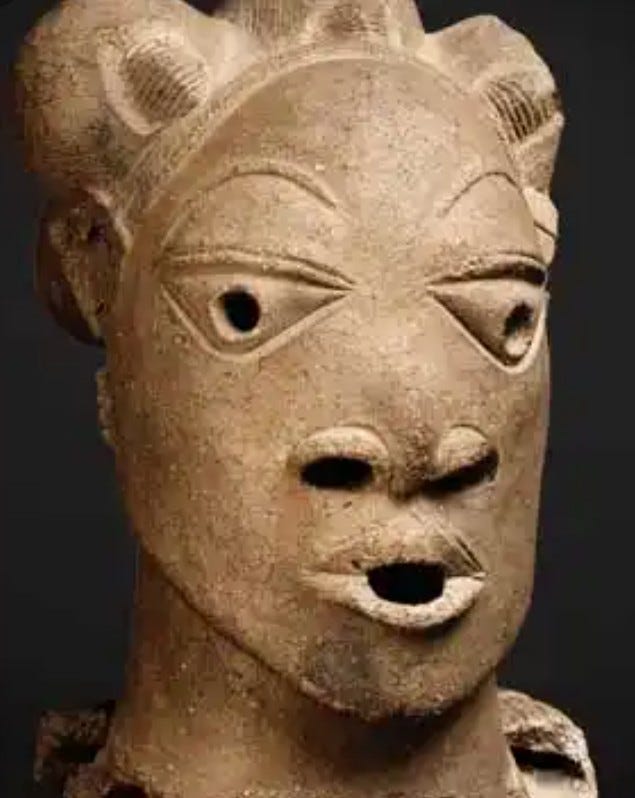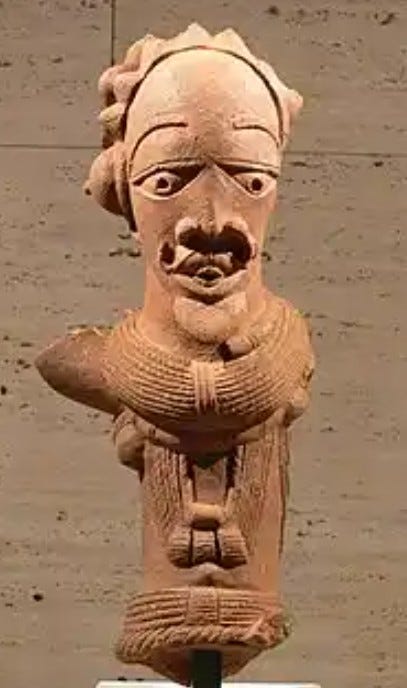NOK CULTURE. A LITTLE HISTORY.
Nok Culture; “A Little History”.
Posted byafrovibemagazine2nd Oct 2021Posted inUncategorized
By Oluwatoyin Magbagbeola.
Nok terracotta was first discovered in 1928, by colonel Dent Young, a co-worker of a mining company, near the village of Nok in Kaduna State, Nigeria. But I just couldn’t believe that, Dent Young, who discovered the art work, would dug around mining by himself. It may have been some workers who had discovered the art works, which was then presented to Dent young, since the art work was discovered in the year 1928, but Nigeria then had not gained independence from the British Colony. There were many people living during that time who were forced or exploited for major benefits by the British. That’s another story for another day.
The terracotta was accidentally unearthed at level of 24 feet from an alluvial tin mine. Young Dent presented the sculpture to the museum of the department of mine in Jos. Fifteen year later, another clay artwork was discovered near the village of Nok. A clerk in charge of the mine had found a head and had taken it with him to used as a scarecrow on his yam field. This was eventually noticed by Bernard Fegg.
Although little is known of the original function of the pieces, but there are people who portrayed these artworks to be ancestry, grave markers, charms to prevent crop failure, charms to prevent infertility and illness.
The function of Nok terracotta sculptures is still unknown. For the most part, the terracotta is preserved in the form of scattered fragments. That is why the Nok art is well known today for the heads, both male and female whose hairstyles are particularly refined. The statues are in fragment because the discoveries are usually made from alluvial mud.
The terracotta figures are hollow, coil built, nearly life sized human heads and bodies that are depicted with highly stylized features, abundant jewelry, and varied postures. The Nok terracotta is said to be the origin of the Niger Congo speaking Yoruba, Jukun, or Dakari people, based on stylistic similarities with bronze figurines of the Yoruba kingdom of Ice and the bini kingdom of Benin.
Today, Nok terracotta art can be found in museums in UK. Although there has been some protests over the issue of stolen African art and artifact to be returned back to their rightful places.
Follow Afrovibe magazine on Instagram, and stay tune for more African news, history, culture, food, and lifestyle.
Posted byafrovibemagazine2nd Oct 2021Posted inUncategorized







